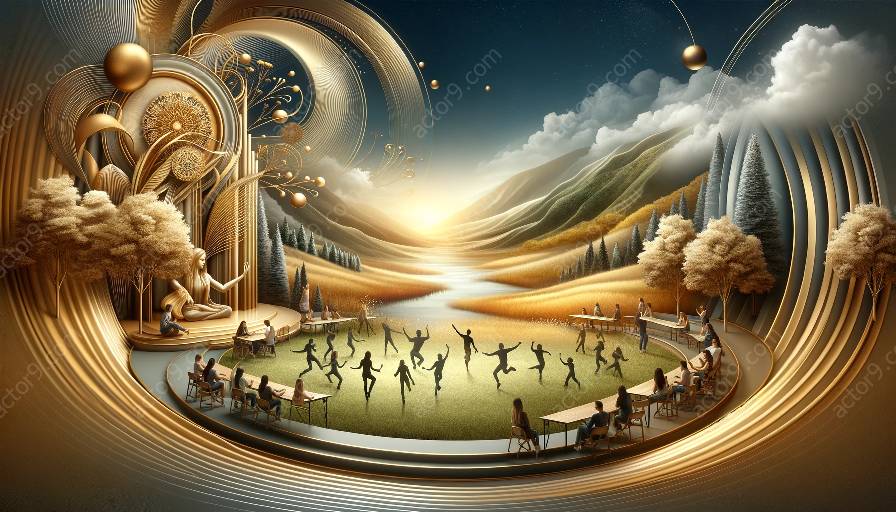Physical theatre is a captivating art form that relies on the body as the primary instrument of expression. It combines movement, gesture, and voice to convey stories, ideas, and emotions, often without the use of traditional spoken language. In recent years, technology and innovation have played a significant role in shaping the landscape of physical theatre practices, influencing both the artistic and educational aspects of this unique discipline.
The Impact of Technology on Physical Theatre Practices
Technology has opened up new avenues for artistic expression and creativity within the realm of physical theatre. One of the most notable technological advancements that has revolutionized physical theatre is the incorporation of multimedia elements such as video projections, interactive digital displays, and soundscapes. These elements have enriched performances by offering new visual and auditory dimensions that complement the physical movements and actions of the performers. Additionally, advancements in lighting and stage design have allowed for more dynamic and immersive theatrical experiences, enhancing the overall impact of physical theatre productions.
Furthermore, motion-capture technology, virtual reality, and augmented reality have been integrated into physical theatre practices, expanding the possibilities for creating innovative and experiential performances. These technological tools enable performers to interact with virtual environments, manipulate digital objects, and engage with audiences in entirely new ways, blurring the lines between the physical and digital realms. With these advancements, physical theatre has evolved into a truly interdisciplinary art form that encompasses elements of dance, theatre, visual arts, and digital media.
Technology in Physical Theatre Education
As technology continues to shape the evolution of physical theatre, its influence on education and pedagogy within the discipline has also become increasingly prevalent. Educational institutions and practitioners are incorporating technology into educational curricula, offering students opportunities to explore innovative approaches to physical storytelling and performance. Interactive digital platforms, virtual rehearsal spaces, and online resources have become integral components of physical theatre education, providing students with access to a diverse range of learning materials and tools that foster creativity and experimentation.
Additionally, the use of motion-capture technology and digital modeling software has allowed students to analyze and refine their movement techniques with greater precision and depth. This integration of technology in the educational context not only enhances the learning experience but also prepares students to adapt to the changing landscape of contemporary performance practices. By embracing technology, educators are empowering students to explore the intersection of physicality, technology, and storytelling, thus equipping them with valuable skills for their future careers as physical theatre artists.
The Role of Physical Theatre in Education
Physical theatre holds a unique position in the realm of performing arts education, offering students a distinctive platform to explore the expressive potential of the human body. Through physical theatre, students develop a heightened awareness of their bodies, honing their physical dexterity, coordination, and expressiveness. They learn to communicate narratives and emotions through movement, developing a deep understanding of non-verbal communication and the power of physical presence on stage.
Furthermore, physical theatre cultivates a collaborative and ensemble-based approach to storytelling, fostering a sense of trust, empathy, and connection among performers. Students engage in improvisational exercises, ensemble work, and devising processes, which not only enhance their individual skills but also promote a sense of collective creativity and cooperation. Moreover, physical theatre encourages students to explore diverse cultural and historical perspectives, as well as contemporary social issues, fostering a deeper understanding of human experiences and fostering empathy and cultural awareness.
Conclusion
Technology and innovation have significantly enriched physical theatre practices, offering new possibilities for artistic exploration and creative expression. Moreover, the integration of technology in physical theatre education has transformed the way students learn and engage with the art form, shaping the future of physical theatre. As technology continues to advance, its influence on physical theatre will undoubtedly continue to evolve, inspiring new forms of storytelling, immersive experiences, and interdisciplinary collaborations within the realm of physical performance.




































